What is the Best Leather for Belts?
Cristina CarreraWhich leather is the best for making belts? There are several factors to consider when choosing a type of leather to make a belt out of, including the grade or quality of the leather, what part of the cow the hide comes from, and how thick the hide is.
TLDR: High quality leather belts are made using full grain leather from a double butt cut hide in 8.5 - 9.5 ounce thickness.
Table of Contents
-
Stone Fractal 2.0 Buckle on Leather Belt
Regular price $105.00Regular priceUnit price per$105.00Sale price $105.00 -
Black Ops Fractal 2.0 Buckle on Leather Belt
Regular price $105.00Regular priceUnit price per$105.00Sale price $105.00 -
Outlaw Gun Buckle on Western Leather Belt
Regular price $125.00Regular priceUnit price per$125.00Sale price $125.00 -
Series 7 Space Dial on Leather Belt
Regular price $105.00Regular priceUnit price per$105.00Sale price $105.00
What are the different grades of leather?
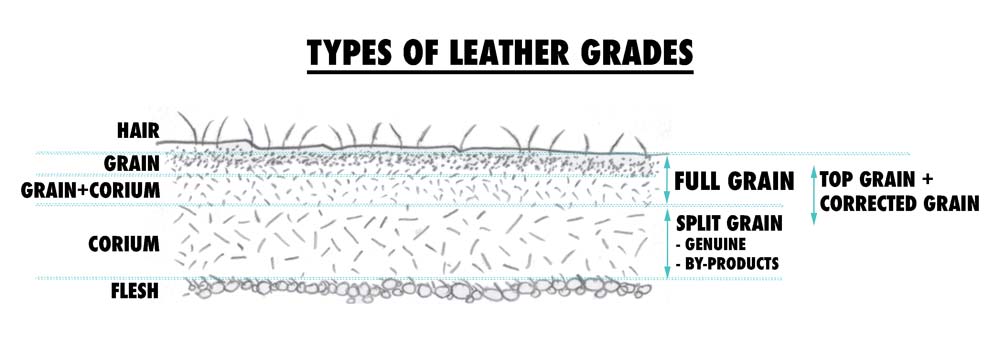
Understanding leather types is essential when choosing a belt, as different varieties offer varying levels of quality, durability, and appearance.
In general, there are six different leather grades used to make leather goods: top-grain, full-grain, corrected grain, split grain, genuine, and bonded. These are the main types of leather used in belt making, and each has unique characteristics that affect the final product. Bonded leather products, for example, are made from leather scraps that are bonded together with adhesives and are generally considered lower quality compared to other leather types. Full-grain and top-grain leathers are the best types to use for most leather goods.
Top Grain Leather
Top grain leather has the best durability and best quality of all the leather grades. This includes the outer grain of the hide that has more densely packed fibers, making it stronger and durable. Compared to other leathers, top grain leather stands out for its superior durability and quality, making it a preferred choice for premium products. Top grain leathers are split into two categories - full-grain leather and corrected-grain leather. The majority of top-grain leather is made into corrected-grain leather. Typically, a high-end leather product is made with a type of top-grain leather.
Full Grain Leather - The Best Leather for Belts
Full-grain leather comes from the upper layer of the animal hide. Once the hair is removed from full-grain leather, you can see the entire grain of the hide and all of its original character. You can see the imperfections of the cow and the character it got from everyday life. Rather than wearing out, full-grain leather develops a patina over time, allowing the natural marbling, natural texture, and color variations in the hide to come through, highlighting its natural beauty.
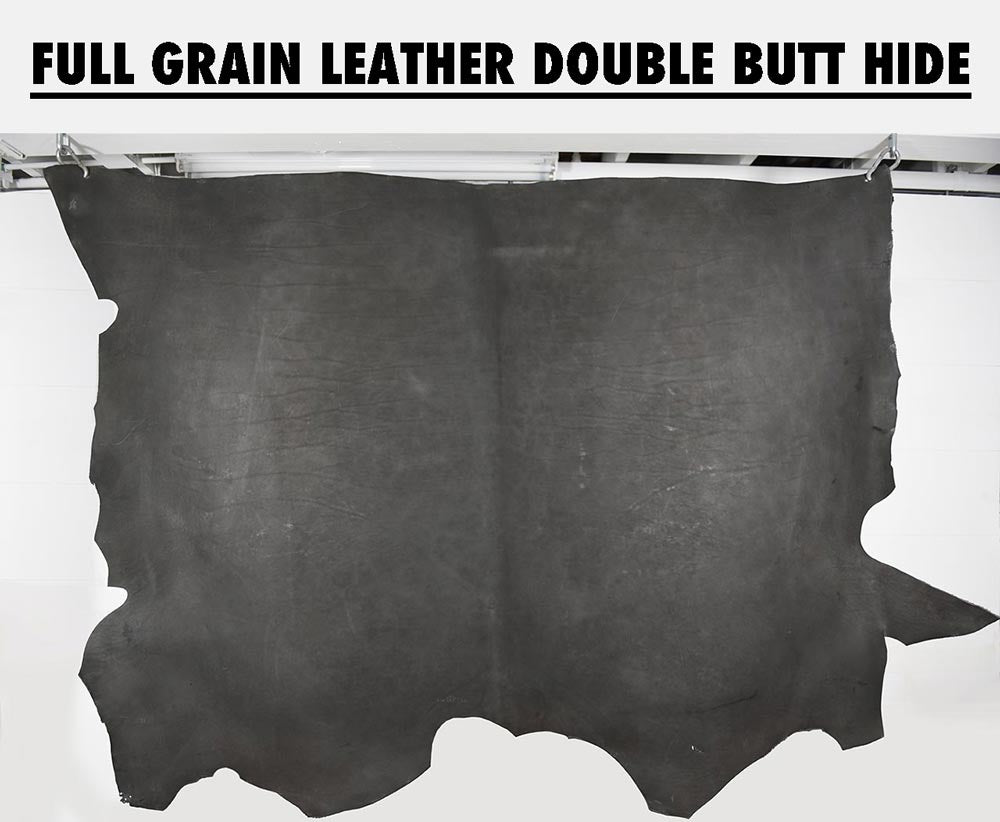
Full-grain leather is extremely strong and durable, wonderful for making many different kinds of leather goods. The natural surface of the top layer makes each leather belt or other product made with it unique. Full-grain leather is known for its durability, style, eco-friendly qualities, and natural variation and character, like wrinkles and scars. We make most of our belts out of full-grain leather hides.
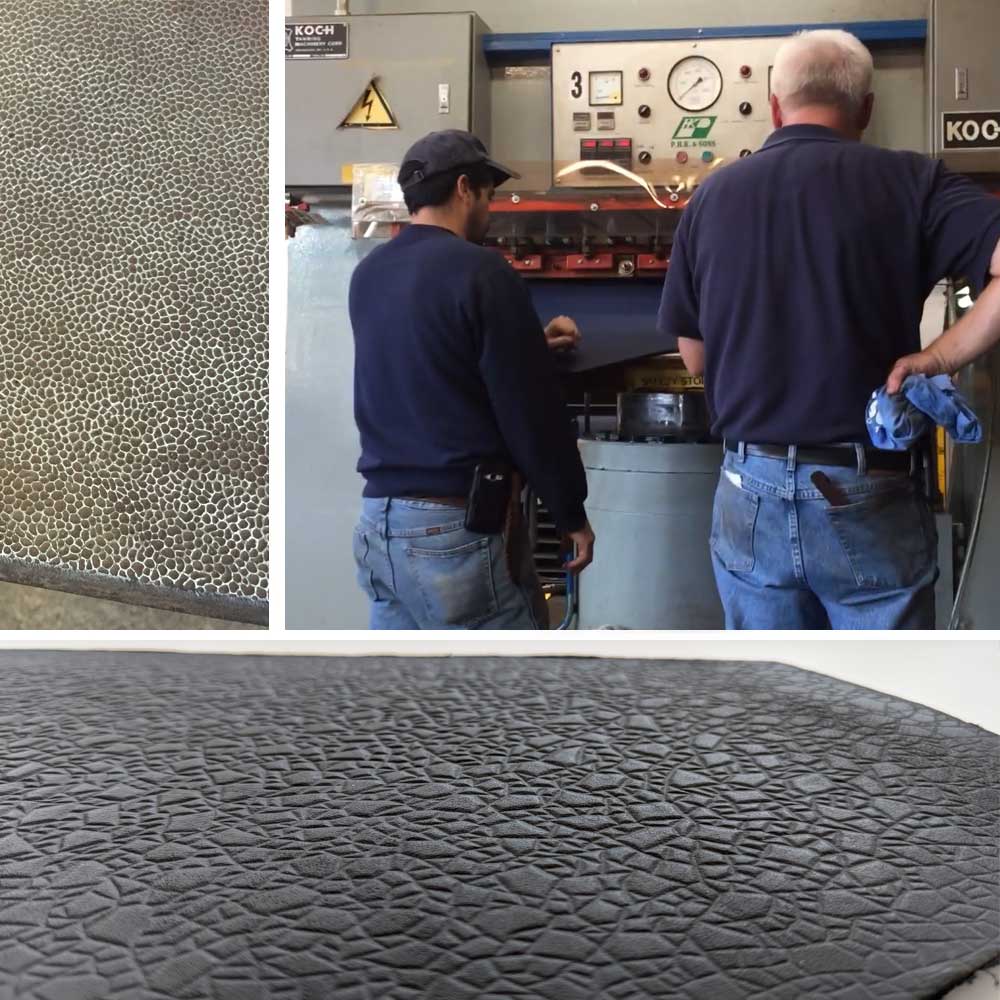
Corrected Grain Leather - Second Highest Quality
Corrected grain leather is a type of top grain leather that is sanded and embossed to give the end product a more uniform, smooth appearance. Tanneries can create a variety of artificial grains using metal dies and hydraulic embossers. The grain is stamped onto hide imperfections and gives it a uniform, natural feeling texture. Some common examples of corrected grain are products with a snake skin or crocodile texture.
Depending on the amount of correction done, products made with this type of leather can be just as durable as full-grain leather. The process of correcting the grain seals the surface of the hide, making it easier to maintain, but it takes longer to develop a beautiful patina. Overall, corrected grain leather is a good quality material to use for belts when full-grain leather is not an option.
Split Grain Leather - Bad for Leather Belts!
Split grain leather is created when the cushier middle layer of corium is separated from the top grain of the leather hide using a leather splitting machine. A thicker hide can be split again into a middle split and a flesh split. Split grain leather is thinner, weaker, and has a looser structure that is not as durable or resilient as top grain leather. It has a fuzzy texture on both sides and requires special care to keep it looking good. It is most often used to make genuine leather, suede, and other leather by-products. Split grain leather should not be used to make belts.
Genuine Leather - Lowest Quality
Genuine leather is a type of finished split leather made using leather scraps. Of the various grains and cuts, genuine leather products are the lowest quality and at the bottom of the list. The name is a misleading marketing buzzword that makes you think it is a good material, but genuine leather is not as durable and long-lasting as other leather grades. Genuine leather can make a good first impression, but it will not stand up to the wear and tear of regular use. This type of leather is often used to make low-quality, mass-produced belts and cheap upholstered furniture. "Genuine Leather" is often stamped on a cheap truck stop belt like a seal of approval, but don't fall for it. It is just a waste of money.
Bonded Leather - Is this even real leather??
Bonded leather is a garbage leather material that shouldn’t be considered real leather. It is a by-product made of leather dust and scraps that are shredded and bonded together with polyurethane or latex onto a fiber mesh. The mixture contains from 10% to 30% leather fibers and has a great impact on the end product’s durability. Bonded leather products, such as belts and furniture, are typically less durable and lower quality than those made from full-grain or top-grain leather. While bonded leather has some stain resistance, it is almost guaranteed to crack and split with regular use. You can expect a cheap belt made of this material to only last about 6 months. Bonded and genuine leather should never be used for belt making.
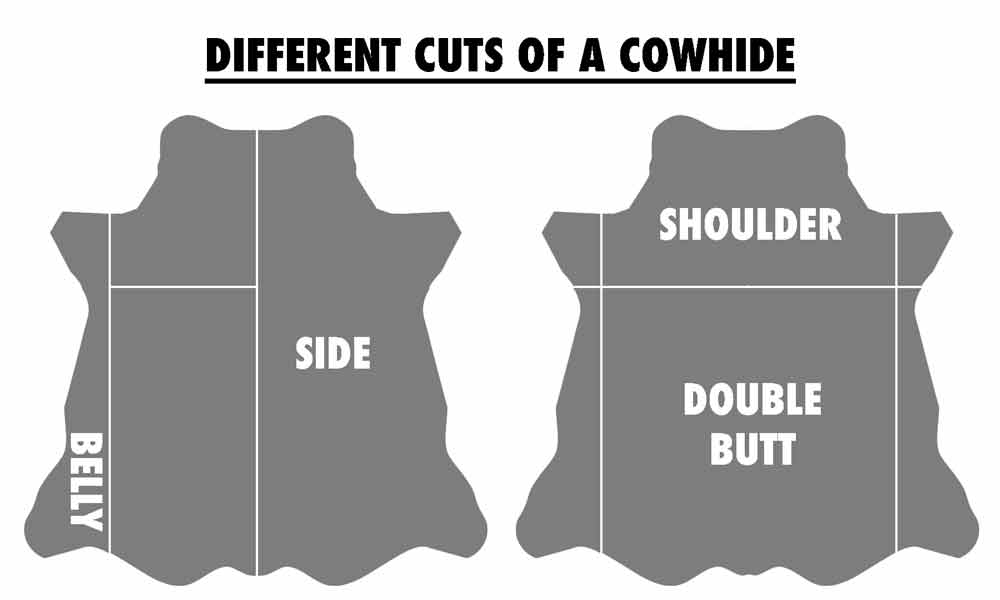
What are the best leather cuts for belts?
When making a belt, the type of leather cut you use is just as important as the quality of the material. Key elements in crafting a great belt include the quality of the leather cut, careful craftsmanship, and attention to finishing details. It is a topic that is less discussed in the tanning industry than leather quality, but equally important for making a great leather product.
Double Butt Cut - The Best Hide for Belts
The double butt cut of a cow hide is from the hind leg portion of the hide, running around the butt and up towards the spine, on both sides of the cow. This is the thickest and firmest part of the hide and yields the most consistent and even material. Double butt cuts are great for making thicker items like belts. Their more rectangular shape and consistent thickness translate to less waste and more usable belt straps than other cuts. This cut of leather makes the best belts for men and women.
We exclusively use vegetable-tanned leather from double butt hides for all our belts and work closely with the R&D department at Seidel Tanning Corp in Milwaukee to develop the highest quality hides.
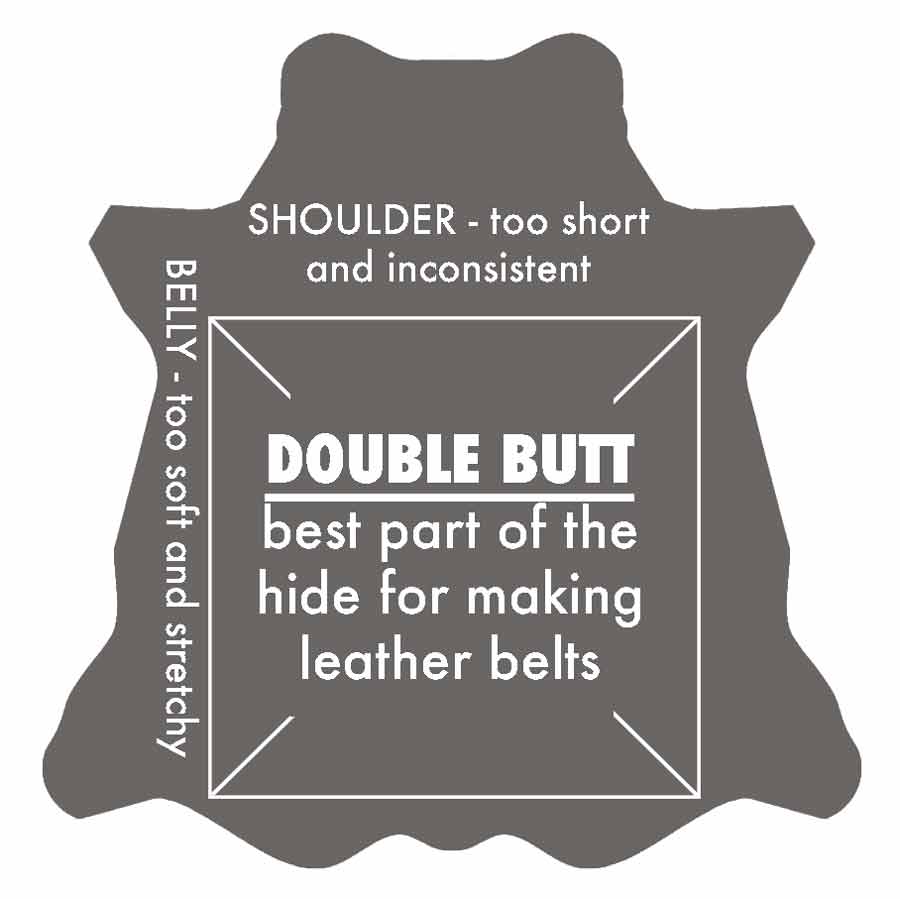
Stone Fractal 2.0 Buckle on Leather Belt
Series 7 Satin Gunmetal Dial on Leather Belt
Side Leather Cut - Good, but not Great
A side cut of a cow hide is half of an entire hide cut lengthwise down the middle. It contains part of the shoulder, butt, and belly of the cow. Side cuts yield leather with a variety of characteristics - it will have thinner, softer, stretchier leather closer to the belly and thicker, stiffer leather closer to the spine. This would not be our first choice for making a leather belt out of because it yields too much waste. However, it is a good compromise if you intend to make a variety of leather goods.
Belly Leather Cut - Bad for Belts
The belly cut of a leather hide is from the left or right edges of the hide and can be a more irregular shape than other cuts. The belly of animals naturally expands and contracts as they eat and drink. This makes belly leather softer and stretchier than leather made from other areas of the hide. Stretchiness is not a characteristic you look for in a great leather belt, and the irregular shape yields a lot of waste, so we do not recommend or use belly leather for belt making. While it is not the best leather cut, it is still a fair option for making a variety of other leather goods, like wallets or bags.
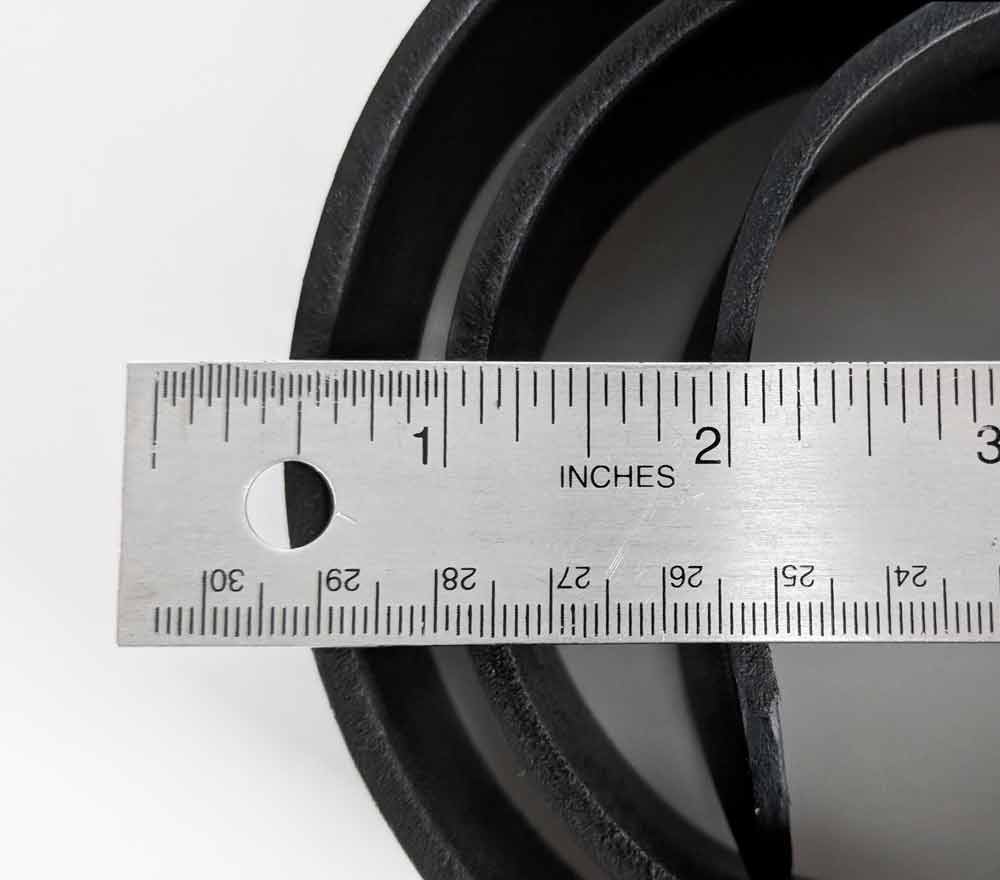
How thick should a belt be?
There is a sweet spot to hit when choosing the thickness for a high-quality leather belt. Personal preference plays a significant role in selecting the right belt thickness, as individual needs and style choices can greatly influence what feels and looks best. The best belt is sturdy enough to resist wear and tear over time, but supple enough to wear every day with a variety of outfits. A belt that is too thin might be comfortable to wear as a dress belt, but it will stretch and distort over time. A belt that is too thick might be good as a gun belt, but it will not be very comfortable to wear all day. In our experience, the ideal thickness for most people ends up being 8.5 - 9.5 ounces, or about 1/8 - 9/64 inches thick. Our solid leather belts are the perfect thickness to balance long-term durability and comfortable everyday wear, casual belts. High-quality belts are designed to provide both durability and comfort, making them a smart investment for anyone seeking lasting value.
Types of Leather for Different Belt Styles
Leather belt styles are as diverse as the people who wear them, making it easy to find the perfect belt for any occasion or outfit. Whether you’re dressing up for a formal event or keeping it casual for a weekend outing, the right leather belt can pull your look together and showcase your personal style.
Dress belts are typically sleek and refined, crafted from high-quality leather like full-grain or top-grain. These belts are usually narrower, with a polished finish and a simple, elegant buckle, perfect for pairing with suits or dress pants. A classic black or brown leather belt is a staple in any wardrobe, offering timeless appeal and versatility for business or formal settings. Typically, dress belts are made from a lighter-weight hide, 8.5 oz or lighter.
For more relaxed occasions, casual leather belts offer a wider range of designs and finishes. These belts might feature a rugged texture, different colors, or a matte finish. They are often made from thicker, more robust leather that is 8.5 oz or thicker. Casual belts pair well with jeans, chinos, or shorts, making them a go-to choice for everyday wear.
If you need something durable for everyday carry, gun belts are designed for strength and longevity. Made from solid leather belts (9 oz or thicker) with sturdy buckles, these belts can handle heavy use while still looking great.
No matter your style, there’s a leather belt to match. With so many options available, leather belts are more than just an accessory. They are a key element in defining your look and ensuring you’re ready for any occasion.
Conclusion: Thick, full grain leather makes the best belts
The long and short of it is that you don’t have to settle for a crappy belt anymore. There are plenty of artisans out there making great quality products. Look for a maker who knows the materials they use and can tell you where their leather comes from. The tanning process and material selection are crucial in determining the best leather for belts. For longevity, proper care is essential. Regular cleaning and maintenance will help preserve your leather belt. Avoid belts made from synthetic materials, as they lack the durability and quality of genuine leather.
Thanks for making it through this article! It’s obvious you have discerning taste. Why not check out the cool leather belts we make while you’re here? And don’t forget to measure your waist if you want a custom belt size.

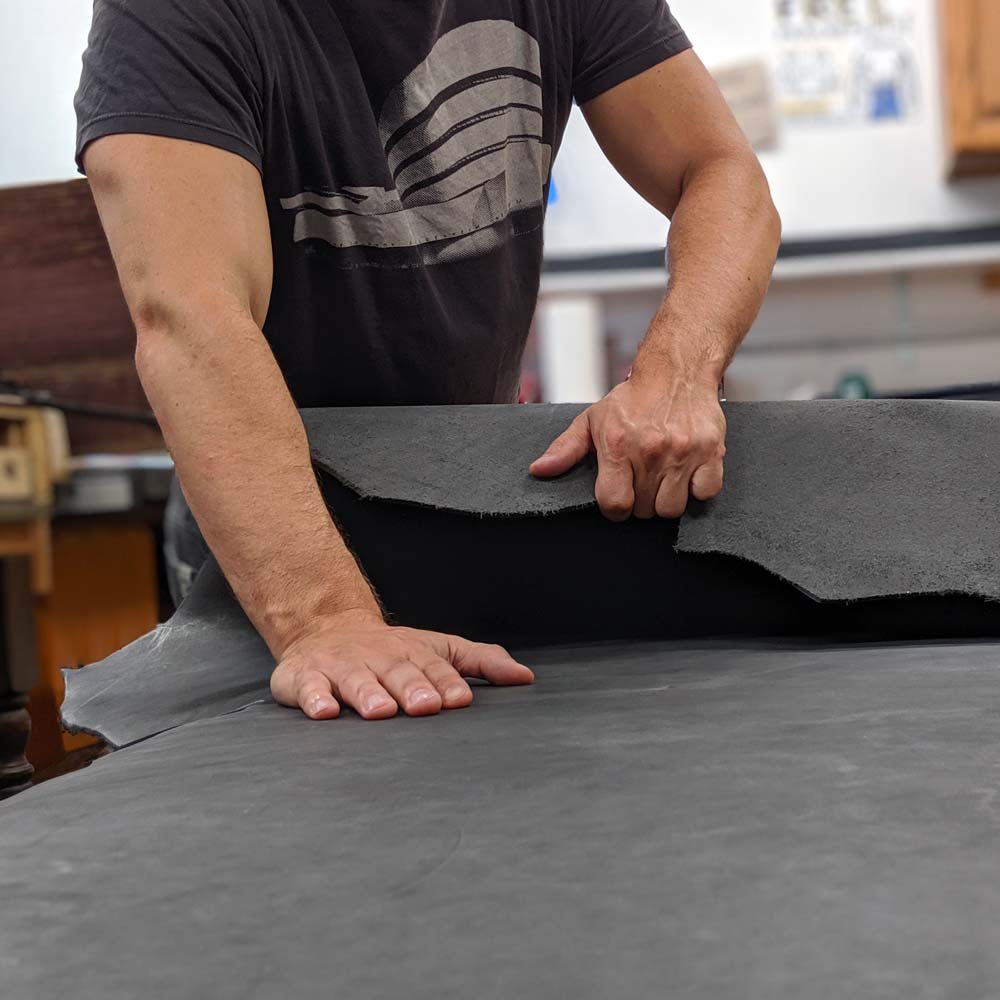
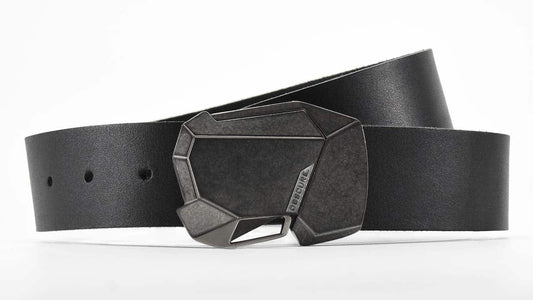
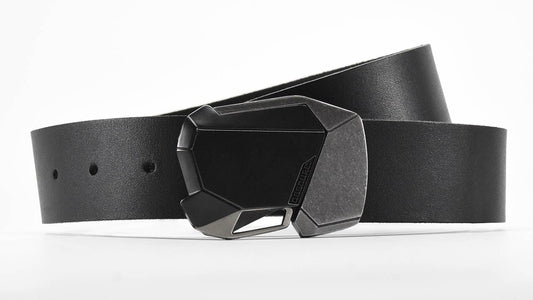
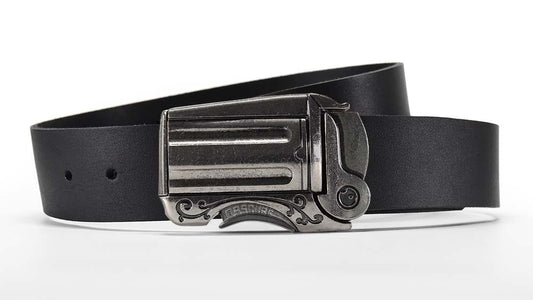
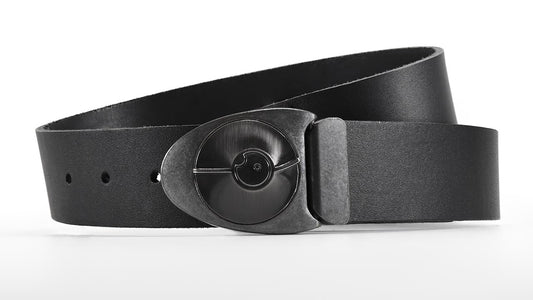
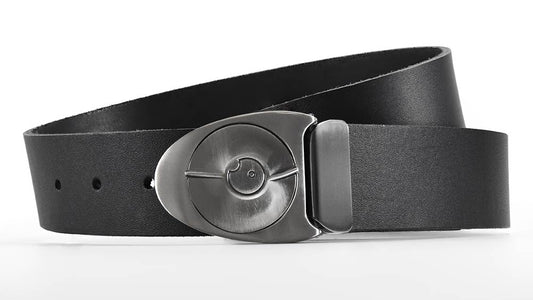
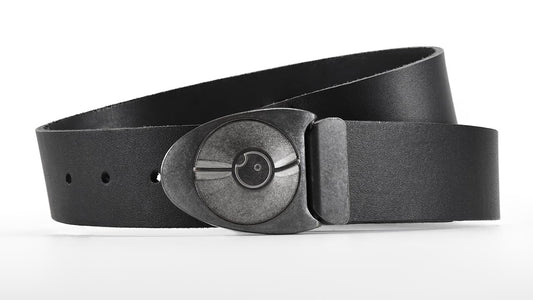

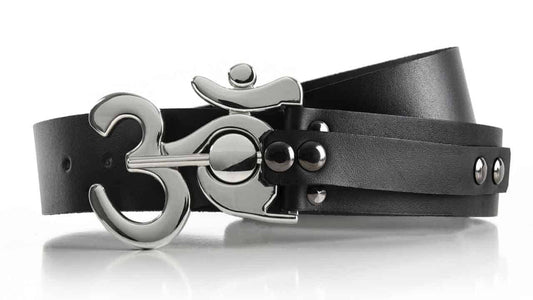
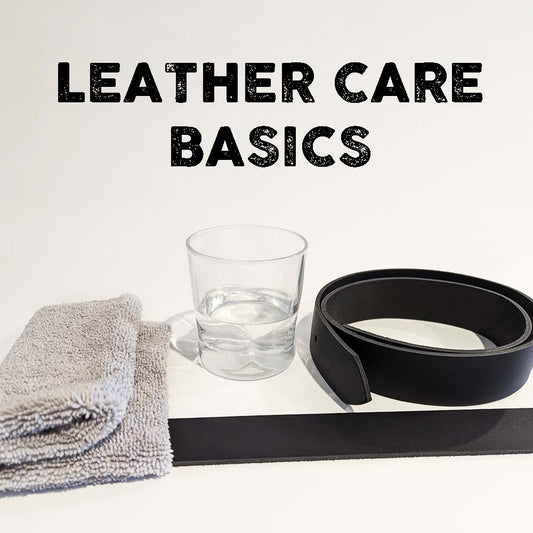
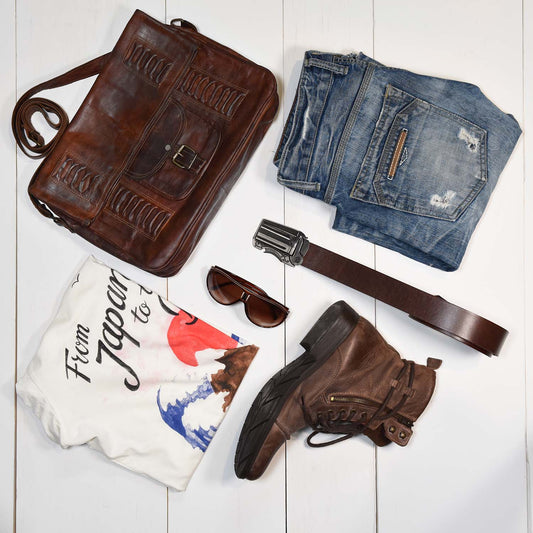
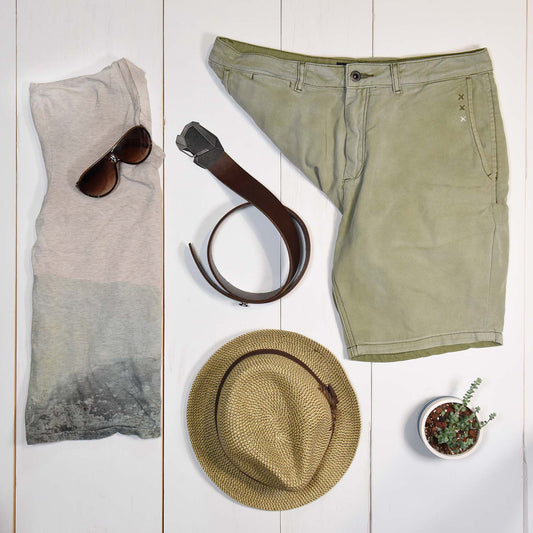

5 comments
Hi Scott,
Cristina here with Obscure Belts, thanks for your question. Yes, we make custom length belt straps for any of our buckles. Just select “Custom Size” when ordering and let us know your exact waist measurements. Thanks!
Hello, do you make custom belt straps?
Hi Tim,
Bryan here with Obscure Belts, thanks for reaching out with your question. Those are some tricky dimensions! Our leather doesn’t quite get up to 60" long because of the size of our cowhides and how we cut them. Sorry we can’t help you with this one, best of luck.
I need leather for 2 guitar straps. Not as thick or stiff as latigo. Sturdy but pliable. At least 60 inches long by 1 and 3/4 or a little wider. You all seem to k ow what you’re doing. Can you help me? Thanks Tim Hopper
U guys seem to be the best in entire world